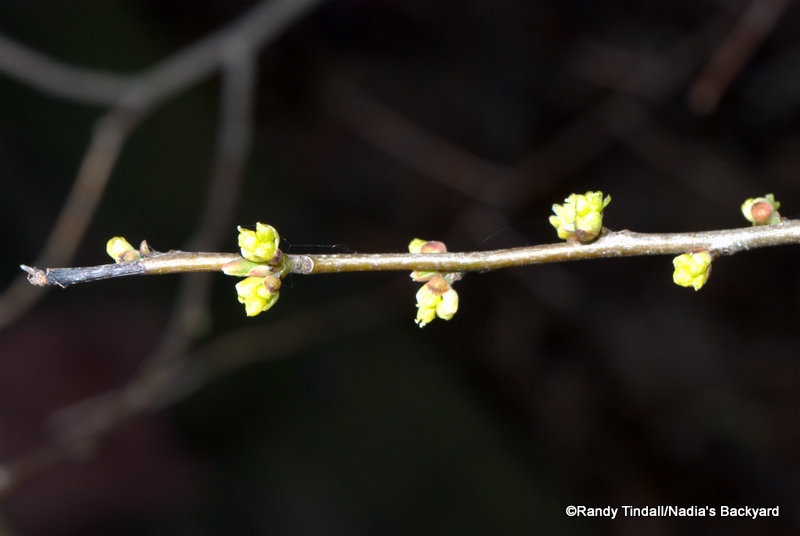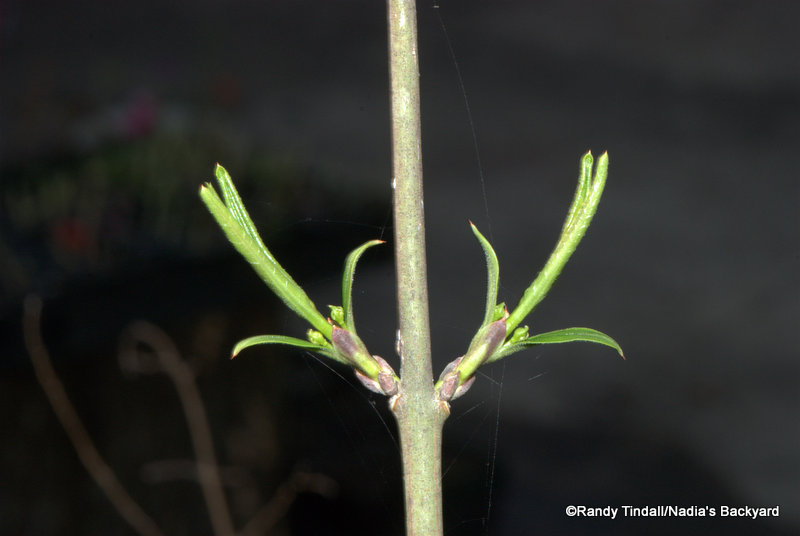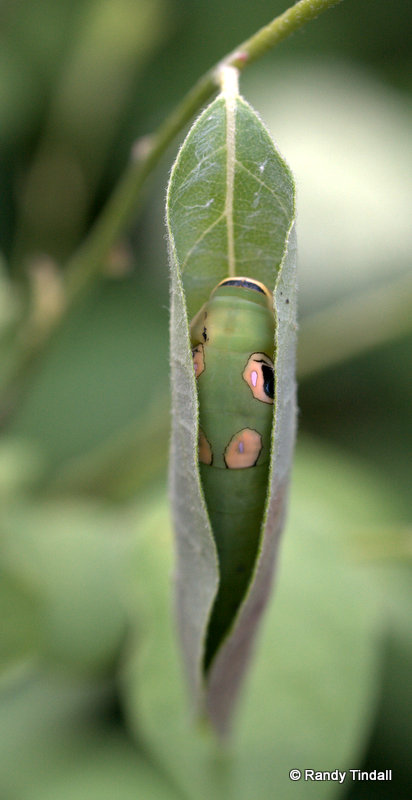Spicebush is a first responder. Maybe not the first bloomer of spring, being preceded by several early ephemerals, wind-pollinated maples (sneezing yet?), redbuds and wild plums (at least in our yard) and others, but if you are tired of the near monochromes of winter or are an early season pollinator on the lookout for a sweet breakfast, Spicebush is still your hero.
Lindera benzoin has not yet flowered in our backyard during this later than usual spring, but it normally blooms from March to May, depending on weather, location, and other imponderables of nature. Spicebush provides a welcome early splash of yellow as our yard awakens from its winter drabness, and it has sometimes been called “wild forsythia” for this habit. Other names for this shrub of the Laurel family include wild allspice, Benjamin Bush (“Benjamin” seems to be a distortion of “benzoin”, an aromatic oil that provides the species name) , spicewood, fever bush and snapwood, among others. It is native from Maine and Michigan, south and west to Kansas, through the midwest and south down to Florida and Texas.
Spicebush seems to be one of those natives that simply has no downside. It’s pretty, good for wildlife, unfussy, pretty much disease-free, well-behaved, edible in several ways, reported to be medicinal in many others, and just an all-around good citizen. So let’s get to some details.
Pretty speaks for itself, but poet Sara Teasdale, originally from St. Louis, said it pretty well, too:
The Spicebush in March
by Sara Teasdale, 1884-1933
Spicebush, yellow spicebush, tell me
Where you found so much clear gold?
Every branch and every twig
Has as much as it can hold,
Flaunting before tattered winter
Your new dress the wind whips round–
Color, color! You were first,
You dredged and drew it from the ground!
Good for wildlife? You bet, most famously for being a nursery for the Spicebush Swallowtail Butterfly, Eastern Tiger Swallowtail and Spicebush Silkmoth (better known as the Promothea Moth), and it is recommend by the North American Butterfly Association for butterfly gardens.
In addition to these beauties, spicebush berries are happily munched by squirrels and many birds, including robins, quail, gray catbirds, Eastern kingbirds and the great crested flycatcher. Deer, however, are apparently not infatuated by this plant, so if deer are a problem for the rest of your garden they will likely leave your spicebushes alone.
Unfussy? Pretty much, since it will deal with both full shade and full sun and a variety of soils. It prefers moist, well-drained soils, however, and this is especially important in sunnier locations, where mulching is recommended. In shade it requires little attention, but will spread out more looking for light.
Now, that said, we have one in partial shade right next to our battered old deck, and it’s not doing so well. We don’t know why exactly, since it is not reported to have any serious disease or insect problems, but it just hasn’t put on much growth over the past couple of years. Nadia pruned it back this spring, so we’ll see what the year brings. We have also added one or two more plants in other locations to compare how they do.
Even successful spicebushes tend to have good manners and know their place. They aren’t pushy or aggressive or try to grab more than their fair share of space by suckering or sprouting myriads of seeds. They can be propagated from softwood cuttings or from seed, but you have to be faster than the birds to get to those seeds for propagation or culinary use.
Spicebush use by humans for food isn’t as common as it once was, but it is a versatile plant for creative culinary artists who get their inspiration from nature. It’s in good company, after all, being related to fragrant sassafras, avacados, and the trees producing bay leaves and cinammon, all fellow members of the Lauraceae. Guess what? As its name implies, spicebush can be very useful as, ahem, spice! and is sometimes compared to allspice. It has been used in a marinade for cooking wild game and added to compotes with other native fruits and nuts. Go here for a recipe for making a vegetarian sausage using spicebush berries. I haven’t tried it, yet, but it sounds tasty!
Probably the most common culinary use of spicebush, like cousin sassafras, is in teas and other beverages, in which twigs, leaves, bark and berries are all used. Recipes abound on the internet for spicebush tea (here’s one), but it is also used to flavor alcoholic beverages for cooking and merriment.
If you would like to harvest and save the berries, Wildman Steve Brill and others (links above) recommend not drying them, but freezing them instead. The berries, like the rest of the plant, have lots of essential oils which can go rancid in storage. The frozen berries can then be thawed and ground up to use as spice for all kinds of cooking.
Spicebush has a noble history as a medicinal plant. “As is typical of many members of Lauraceae, tissues of spicebush are permeated with deposits of terpenes and
related fragrant compounds, sometimes called, generically , “essential oils .” Bark, twigs, leaves, and berries have all been used to prepare flavorings or folk medicines based on these fragrant compounds.” These oils have been used as liniments for sore muscles and joints, but mostly teas are used to treat various ailments, including reducing fever, which it seems to do by increasing perspiration, and dosing intestinal parasites. The medicinal qualities of this shrub are not just matters of folklore, since it has been shown in the laboratory to have antimicrobial effects.
So, then. Tea, beer, butterflies, versatile spice, medicines, and pollinator food, all in one handy package Plus, it has looks! Why would you not want this? Go find yourself some spring gold and add it your collection of natives!






Great article,
This is my first year of growing these shrubs. I bought mine from the MO Dept of Conservation. Their stock is of high quality. Yet to keep costs down for future propagations I would like to propagate these via cuttings. I’ve read that can be done. Does anyone have any experience doing this that they would like to share?
Thanks,